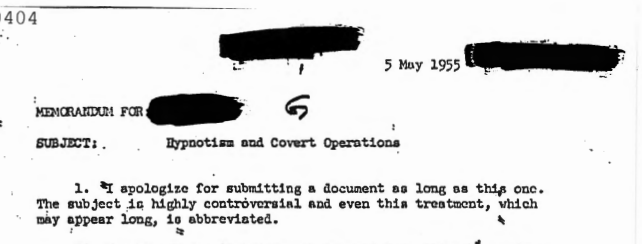
MK-ULTRA was the CIA’s code name for program to develop ways to control human behavior. MK-ULTRA, launched during the Korea War, continued through the early 1970s when its existence was exposed by investigators from the Senate Select Committee on Intelligence Affairs, also known as the Church Committee.
Because of its notorious character, and the CIA’s destruction of many records, MK-ULTRA has become shrouded in myths and conspiracy theories, some of which are true.
The Black Vault has perhaps the most complete online archive of MK-ULTRA documents. In 2018 Webmaster John Greenewald obtained hundreds of MK-ULTRA files that had never been made public before, including material on two mind-control programs that preceded it, Project Bluebird and Project Artichoke.
How these secret program generated unethical and abusive experiments for two decades is a dark chapter in American history that should not be forgotten.
Here’s an 1954 memo on the Military Applications of Hypnotism. Here’s a 1955 memo on Hypnotism and Covert Action.
Greenewald’s introduction to the program captures both is size and significance.
The scope of Project MKUltra was broad, with research undertaken at 80 institutions, including 44 colleges and universities, as well as hospitals, prisons, and pharmaceutical companies. The CIA operated through these institutions using front organizations, although sometimes top officials at these institutions were aware of the CIA’s involvement. As the US Supreme Court later noted, MKULTRA was: concerned with “the research and development of chemical, biological, and radiological materials capable of employment in clandestine operations to control human behavior.”
The program consisted of some 149 subprojects which the Agency contracted out to various universities, research foundations, and similar institutions. At least 80 institutions and 185 private researchers participated. Because the Agency funded MKUltra indirectly, many of the participating individuals were unaware that they were dealing with the Agency.



